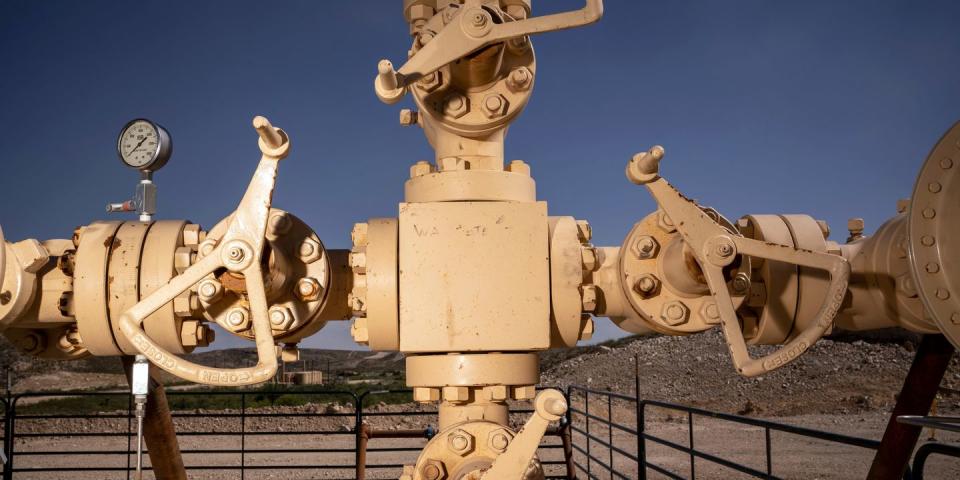Scientists Say the Areas Around Fracking Sites Have Up to 40% More Airborne Radioactive Particles

"Hearst Magazines and Yahoo may earn commission or revenue on some items through the links below."
Scientists say the areas around fracking sites have up to 40 percent more airborne radioactive particles.
As an unorthodox way to extract materials, fracking has presented research challenges.
Researchers suggest not living within 12 miles of a fracking location.
Harvard scientists have found that fracking is associated with greatly increased radioactive particulate in the air, especially in West Virginia’s dependent petrochemical economy. People who live within about 12 miles of fracking sites are at the highest risk, with ambient radiation as high as 40 percent over the background level.
Dive deeper. ➡ Read best-in-class science features and get unlimited access to all things Pop Mech , starting NOW.
The data comes from 17 years of measurements at over 150 radiation monitoring sites. Scientists examined these measurements, combined with the location data on more than 120,000 fracking wells. While experts have known fracking can release chemicals into the groundwater in particular, this is the first study to analyze radiation levels.
Fracking may be a lot of things, but the idea that it’s literally radioactive could be surprising. The reason is that a lot of underlying rock contains small amounts of uranium, for example, as part of the naturally occurring bedrock found all over Earth. Where conventional mining adds safety precautions and traditional oil drilling doesn’t interact with bedrock the same way, fracking has gone a third way that pulverizes the bedrock and releases the uranium.
The study refers to fracking by a technical name: unconventional oil and natural gas development (UOGD).
“As of 2017, over 120,000 onshore UOGD wells had been drilled via a practice involving directional drilling combined with multistage high-volume hydraulic fracturing (fracking),” the researchers explain in the paper. “Meanwhile, numerous controversies have arisen, partially due to the potential harmful impacts on the local environment, and on the health of nearby residents.”
Read Up: The Best Books About Fracking
Without an established track record of research, scientists can’t make meaningful observations about how fracking is affecting radiation in the air or not. The nationwide network of radiation observatories, built during the Cold War when nuclear war was an ever-present fear, offers a unique chance to triangulate fracking locations and radiation levels.
The scientists crunched the data for each radiation measurement in combination with the many fracking sites—1.5 million total—that dot the U.S. They found that radiation sites within 12 miles of heavy fracking activity, as the wind blows, had higher radiation levels than are otherwise explained.
“These associations suggested the existence of some pathways by which UOGD activities could release [radioactive material] into the atmospheric environment,” the researchers say. They conclude:
“Likely mechanisms include the fugitive release of natural gas, which contains a higher-than-background level of radon at wellheads, compressor stations, pipelines, and other associated facilities; the management, storage, discharge and disposal of flow-back and produced water which is rich in [radioactive materials]; the accidental spill or beneficial use of produced water in nearby communities; the handling, transport, management, and disposal of radioactive drill cuttings.”
There are a lot of places in the process where radiation could be leaking into the air. But with data in hand, the people in charge of fracking wells can examine these risk factors up close and make simple changes, whether that’s better gaskets or more careful filtering of waste water released into communities. Just like natural gas, knowledge is power.
You Might Also Like

 Yahoo News
Yahoo News 